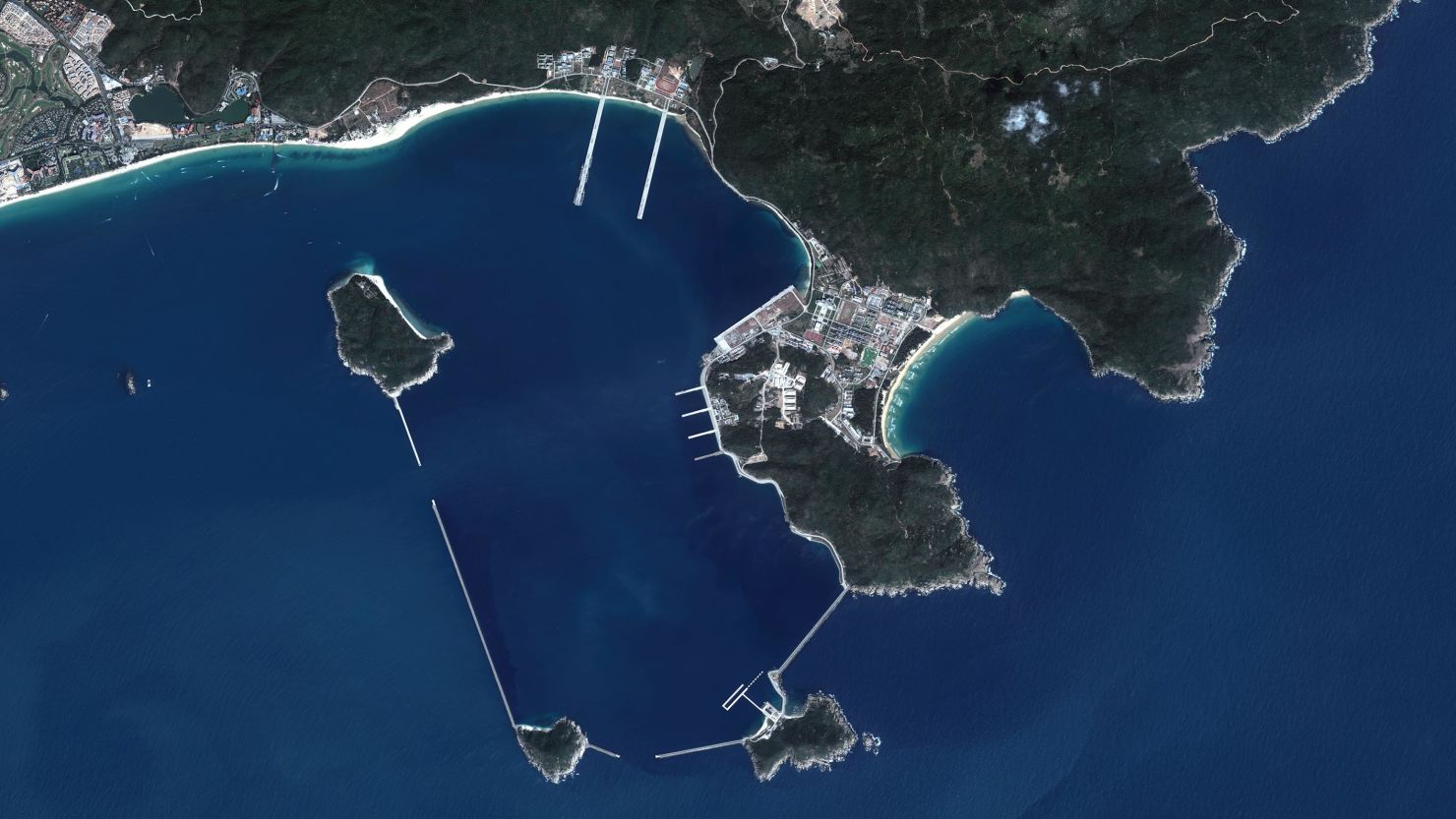It’s known as the “Hawaii of China,” a tropical island paradise where the Chinese middle class enjoys sandy beaches, five-star resorts, and duty-free luxury shopping.
It’s also China’s largest free-trade port and host of the Boao Forum, an annual meeting of political and business leaders dubbed “Asia’s Davos.”
But Hainan, China’s southernmost province, is also a strategically important island. And just like Hawaii, it is also home to key military bases.
As American officials reveal more information about the Chinese balloon shot down on February 4 after floating across the US airspace, Hainan, an island thousands of miles away from America, has been brought into focus.

China has rejected US claims that the balloon was a surveillance device, instead maintaining it was a civilian research airship blown off course.
According to CNN reporting, US intelligence officials believe the Chinese balloon is part of an extensive surveillance program run in part out of Hainan by the Chinese military.
US officials told the New York Times they had been tracking the balloon since it lifted off from Hainan in late January. CNN previously reported that the US began tracking the balloon long before it entered the airspace of Alaska.
American officials have not provided the detailed location of the alleged balloon launch site on Hainan, and it’s not known if the balloon was launched from a military installation.
But the island, located on the northern edge of the South China Sea, has great strategic importance in the eyes of the Chinese military.
Out of sight of the holiday makers and business travelers, the southern edge of Hainan is a major base of the People’s Liberation Army (PLA) Navy, home to part of its South Sea Fleet.
The base not only allows the PLA Navy to access the contested waters in the South China Sea, but also the crucial sea lane that links the Asia-Pacific region with India and the Middle East.
It was from this large naval complex that the Shandong, China’s second aircraft carrier and the first to be built domestically, was commissioned in 2019.
The complex is also home to nuclear-powered ballistic missile and attack submarines of China’s growing underwater fleet.
The Yulin Naval Base made headlines in 2020 when commercial satellites captured a PLA Navy sub entering a tunnel leading to underground docking facilities on the island.
Hainan also has bases for PLA fixed-wing aircraft and helicopters.
In addition, units from the maritime militia, a shadow force of supposed fishing boats whose existence China denies, operate out of Hainan, Western experts say.
In late 2021, a Center for Strategic and International Studies report said China was building new electronic warfare, communications and intelligence gathering facilities on Hainan.
As recent as September 2022, satellite images showed China was expanding its submarine base on Hainan, adding two new piers to the four existing piers at the Yulin Naval Base.
Home to 10 million people, Hainan is about 20 times the size of O’ahu, the most populated island in Hawaii and home to Pearl Harbor.
Hainan’s economy is among the smallest of all Chinese regions and provinces, with its GDP ranking only above far-flung Ningxia, Qinghai and Tibet. Agriculture contributes the most to its economy.
In 2020, China rolled out its blueprint to transform the entire island of Hainan into the world’s largest free trade port by 2035 – a policy aimed to reduce Hainan’s dependency on traditional sectors and become a new driver for trade and investment in China.
Hainan is also home to the Wenchang Space Launch Site, located on the northeastern edge of the island. Selected for its low latitude, the Wenchang site allows for the heavy payload required for launching China’s new space station, the Tiangong. It is capable of launching the Long March 5, the most powerful Chinese rocket to date.




